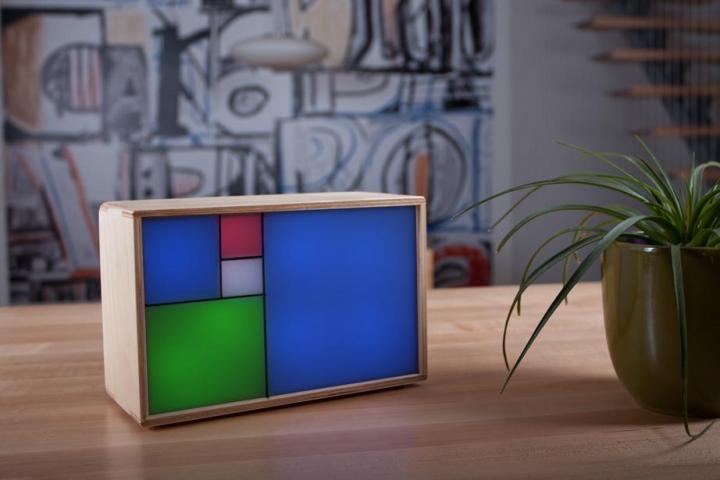
To back up a little bit, it’s essential to understand the Fibonacci sequence. Developed by mathematician Fibonacci in the 13th century, this sequence of numbers starts with one and one. Each subsequent number is the total of the previous two numbers (so one and one makes two, two and one makes three, and so on). To create this clock, Chretien used five terms: one, one, two, three, and five.
The screen of the clock has a series of glowing, colorful squares, and each one corresponds to a number in the sequence. Hours are depicted in red, while minutes are shown in green. If a square is used to show both hours and minutes, it turns blue. All of the white squares are for decorative purposes; you consider them null while adding up the time.
Of course, you’ll need to do a bit of math in order to get the time of day from this alarm clock. To read the hour, you add up the values of the red and blue squares. For the minutes, you do the same with the blue and green squares. Minutes are displayed in five-minute increments, meaning you have to multiply your sum by five to get the accurate total.
Once you get used to the math, the clock serves as more than just your wakeup reminder; it can be programmed to act as a lava lamp with changing colors.
Additionally, Chertien made the clock to be hackable. The device itself is powered with an Atmega328 microcontroller that runs Arduino, and users can change the clock’s code using Arduino IDE. He designed the alarm clock to be an open-source hardware project, and he welcomes you to customize it to your liking.
For about $95, you can make a pledge on the Fibonacci Clock’s Kickstarter campaign page and receive one in the mail by October 2015. However, you can pledge $62 to receive a DIY kit including everything you need to create your own Fibonacci Clock if you’re feeling adventurous.
Editors' Recommendations
- How to use all Amazon Alexa alarm clock features
- Lenovo’s Smart Clock Essential makes it easy to tell time, even for the groggy
- Nintendo Switch year in review tells you how much time you spent playing in 2019
- Amazon Echo Spot vs. Lenovo Smart Clock


